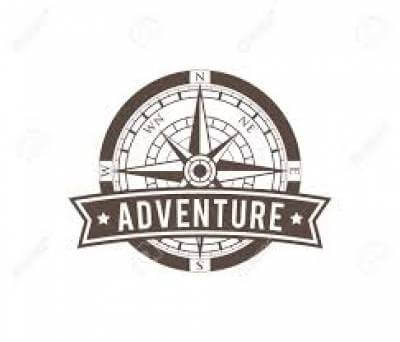EVEREST BASE CAMP TREK 6 DAYS
With the 6-Day Everest Base Camp Trek, adventurers can make a swift, physical challenge where every second counts and get that quick fix that they crave. This is for people who don't have much time, but want to see the magnificent Mount Everest up close — to allow you to experience the awe-inspiring Himalayan landscape while pushing your limits. Last but not least, a very challenging trek, devoted to 7-9 hours of daily walking, gives you a real feeling of success and satisfaction.
Afterward, the long hike kicks off with a flight from Kathmandu to the town of Lukla, with spectacular views of the Himalayan range. Once you land in Lukla, the journey continues to Jorsale, a village located at the foot of Everest. As you walk along the trail, you will also witness a remarkable change in climate, terrain, and culture, passing Sherpa villages and local communities as you follow the path of the Dudh Koshi River. The initial day is more forgiving, helping you acclimatize to the atmosphere ahead of your daunting days to come.
Day two takes you to Namche Bazaar - known as the gateway to the Everest region. The read and write of this busy Sherpa town, a stopping point for trekkers and traders, also has great restaurants and amazing views of the world’s highest peaks including Mount Everest and Ama Dablam. A short hike up to the Everest View Hotel from Namche gives you an even broader view of Everest and offers a brilliant chance to acclimatize while taking in the stunning surroundings.
The trail finally leads you into the mountains on the third day, lodging all the way to Kyanjom, along a steeper and higher-elevation route. As the terrain grows more rough, the spectacular views of Everest and the surrounding peaks are always an encouragement. From Kyanjom you tour to Pangboche and Thukla, at each turn heading closer to Everest Base Camp. Standing at the base of the world’s most towering mountain is a monumental moment and one that washes over you with awe and a sense of achievement.
On the last day, there’s an early hike to Kala Patthar, the most celebrated viewpoint in the region. Watching the sunrise over Mount Everest from Kala Patthar is an experience that’s not easily forgotten, with the world’s tallest mountain enveloped in golden light. Once you take in the spectacular views, you’ll descend to Gorakshep, where a helicopter will bring you back to Lukla, providing a last glimpse of the Everest region from the air. A short flight from Lukla flies you back to Kathmandu, rounding off your action-packed, yet rewarding 6-day trip.
The 6-Day Everest Base Camp Trek is for those who want to challenge their physical and mental limits while enjoying the mesmerizing landscapes of the Everest region at a pace never seen before, ultimately leaving them with unforgettable memories. This arduous trek pushes your physical limits, but the awe-inspiring scenery and enormous sense of accomplishment are unforgettable.
IMPORTANCE NOTICE: This trek is not for beginner trekkers. It is only suitable for very highly experienced trekkers who have completed several treks at altitudes above 5000 meters. Additionally, please note that from March to May and September to December, the Lukla flights will operate from Ramechhap. You will need to drive 5-6 hours from Kathmandu to Ramechhap to catch the flight. Occasionally, helicopter flights may be delayed or canceled due to weather conditions, so it's advisable to have at least 2 buffer days in your itinerary.
ITINERARY
Day 1 : Fly from Kathmandu to Lukla & Trek to Jorsalle (2,740m) - Duration: 7-8 Hours.
Your journey begins with a scenic 40-minute flight from Kathmandu to Lukla, a small mountain town that serves as the gateway to the Everest region. The flight offers stunning panoramic views of the Himalayan range, providing a perfect start to your adventure. Once you arrive in Lukla, you’ll begin your trek toward Jorsalle, a village situated at the foothills of Mount Everest. The trek takes approximately 7 to 8 hours, winding through beautiful landscapes, crossing suspension bridges, and trekking through lush forests. As you ascend, you’ll start to acclimatize to the altitude. Jorsalle offers a chance to relax and rest before continuing on the next day.
Day 2 : Trek to Namche Bazaar & Hike to Everest View, Trek Down to Kyanjoma (3,600m) - Duration: 7-9 Hours.
On day two, you’ll embark on a 7 to 9-hour trek to Namche Bazaar, the bustling Sherpa town known as the "gateway to Everest." As you ascend, the views of Everest and other towering peaks begin to unfold. Namche Bazaar is an energetic town, filled with markets, cafes, and traditional Sherpa culture. Upon arrival, you’ll have time to rest before setting off on a short hike to the Everest View Hotel. This hike provides a spectacular view of Everest and its surrounding peaks, including Ama Dablam. After soaking in the breathtaking vistas, you’ll descend and continue your trek down to Kyanjoma, located at 3,600 meters. Kyanjoma offers a quiet retreat and is an ideal place to acclimatize further.
Day 3 : Trek from Kyanjoma to Pangboche (3,885m) - Duration: 7-8 Hours.
On day three, you’ll continue your journey to Pangboche, located at 3,885 meters. This trek takes you through the serene, high-altitude landscape of the Khumbu region, offering striking views of the majestic peaks of Everest, Lhotse, and Ama Dablam. The trail gradually ascends over rocky terrain and passes through several small villages, giving you the chance to interact with locals and immerse yourself in Sherpa culture. The trek will take approximately 7 to 8 hours. Once you reach Pangboche, you’ll find a peaceful village with its iconic monastery, providing a perfect place to relax and enjoy the surroundings before heading further into the mountains.
Day 4 : Trek from Pangboche to Thukla (4,620m) - Duration: 6-7 Hours.
Day four takes you higher up the trail, with a 6 to 7-hour trek from Pangboche to Thukla, located at an altitude of 4,620 meters. The trail continues to ascend through the rugged terrain of the Khumbu Valley, offering fantastic views of the surrounding peaks. The journey takes you past memorials dedicated to climbers who lost their lives while attempting to summit Everest. Thukla is a small village that offers basic accommodation for trekkers to rest. This night will be spent in Thukla, allowing you to acclimatize to the higher altitude before your final push to Everest Base Camp.
Day 5 : Trek to Gorakshep (5,180m) & Visit Everest Base Camp (5,364m) – Return to Gorakshep - Duration: 7-9 Hours.
On day five, you will trek to Gorakshep, located at 5,180 meters. The trek to Gorakshep takes about 3-4 hours and offers spectacular views of Everest, Lhotse, and the surrounding peaks. After arriving at Gorakshep, you’ll have a short break before continuing on the final leg of your journey to Everest Base Camp (5,364m). The trek to Everest Base Camp is approximately 2-3 hours, and standing at the foot of the world’s highest mountain is an unforgettable experience. You will have time to take in the breathtaking views of the Khumbu Icefall and Everest before returning to Gorakshep for the night. This day’s trek will take about 7 to 9 hours, but the experience of reaching Everest Base Camp makes it all worth it.
Day 6 : Early Morning Hike to Kala Patthar (5,555m), Trek Down to Gorakshep & Shared Helicopter to Lukla, Flight to Kathmandu - Duration: 6-7 Hours.
On the final day of your trek, you’ll rise early to hike up to Kala Patthar, located at 5,555 meters. Kala Patthar is renowned for offering the best panoramic views of Mount Everest and the surrounding peaks, especially during sunrise. This is one of the most iconic moments of the trek, as you witness the first light of day illuminate Everest’s towering summit. After taking in the magnificent views, you’ll descend to Gorakshep, where you’ll board a shared helicopter for a scenic flight back to Lukla. The helicopter ride offers stunning aerial views of the Everest region before returning to Lukla. From Lukla, you’ll catch a flight back to Kathmandu, completing your 6-day Everest Base Camp trek with a lifetime of memories. The entire trek today lasts around 6 to 7 hours, with the helicopter flight being the highlight of the day.
SERVICES
What's Included in Your Package:
- Private Airport Transfers: Domestic airport pickups and transfers by private car/jeep.
- Meals: Enjoy three nutritious meals per day (breakfast, lunch, and dinner) throughout the trek.
- Fresh Fruits: Fresh fruit is provided every evening after dinner.
- Accommodation: Basic trekking lodge (Tea House) accommodations during the trek.
- Helicopter Ride: Shared helicopter flight from Gorakshep to Lukla.
- Permits and Fees: All necessary paperwork, including Sagarmatha National Park Entry Permit & Khumbu Pasang Lhamu Rural Municipality fees.
- Flights and Transfers: Kathmandu-Lukla-Kathmandu flight with private airport transfer and domestic airport tax included.
- Experienced Guide: A highly experienced, knowledgeable, friendly, and English-speaking government-licensed guide, with all related expenses covered (salary, food, drinks, accommodation, transport, and insurance).
- Medical Supplies: Comprehensive medical supplies, including a first aid kit available throughout the trek.
- Sherpa Support: Strong, helpful Sherpa porters equipped with proper safety and walking equipment, covering their salary, food, accommodation, and insurance (one porter for every two people).
- Emergency Service: Arrangement for emergency helicopter evacuation (cost covered by your travel insurance company).
- Trekking Gear: Use of a sleeping bag, down jacket, duffel bag, and walking poles (if needed, to be returned after the trip).
- Merchandise: A Sherpa Expedition and Trekking T-shirt.
- Government Fees: All government taxes and official expenses are included.
- Trip Achievement Certificate: Certificate awarded upon successful completion of the trip.
- Health Monitoring: Oxygen meter to check your pulse, oxygen saturation, and heart rate twice daily to monitor for potential Altitude Mountain Sickness (AMS).
- Assistant Guide: An assistant guide for groups of 8 or more people.
Costs Exclude:
- Meals in Kathmandu: Lunch and dinner while you are in Kathmandu.
- Hotel Accommodation in Kathmandu: Hotel stay in Kathmandu before and after the trek.
- Nepal Entry Visa: The visa can be easily obtained on arrival at Tribhuvan International Airport (Kathmandu). The visa fees are:
- $30 USD for a 15-day visa
- $50 USD for a 30-day visa
- $125 USD for a 90-day visa
- Travel and Medical Insurance: Personal travel and medical insurance coverage.
- International Airfare: Your international flight to and from Nepal.
- Personal Expenses: Any personal spending, such as shopping or souvenirs.
- Beverages and Snacks: All alcoholic and non-alcoholic beverages (including soup, tea, coffee, hot chocolate, cocoa, and mineral water), as well as extra food, drinks, and desserts (chocolate, cake, pie, pudding) you purchase during the trek or in the tea houses.
- Hot Showers & Charging: Charges for hot showers and battery charging facilities at the tea houses.
- Tips: Tips for your guide, porter, and driver (tipping is expected).
- Excess Baggage: Excess baggage over 10 kg for the Lukla flight.
- Important Note: If you need to return earlier from the trek due to illness or other reasons, the costs for your flight, hotel, mountain accommodation, food, and other services will be non-refundable. You will be responsible for any additional expenses, such as hotel and food costs in Kathmandu.
EQUIPMENTS
The following information will give you some idea about what you need to bring for the trek. It is important you do not forget the essential items, as this will determine your comfort and safety on the trek. Equally important is that you do not burden yourself with unnecessary equipment on the trek.
- Sleeping Bag (Sherpa Teams will provide but need to return after completing the trip)
- Duffel Bag (Sherpa Teams will provide but need to return after completing the trip)
- Fleece jacket or pullover
- Waterproof windbreaker or windcheater
- Thermal underclothes
- Rain poncho
- Down jacket (Sherpa Teams will provide but need to return after completing the trip)
- Fleece or wool trousers
- Sun hat or scarf
- Trekking pants (two pairs)
- Mittens or woolen gloves
- Hiking socks (several pairs)
- Moisture-wicking shirts, including t-shirts
- Trekking shoes or boots with spare laces
- Flip-flops or sandals for relaxing in the evenings
- Underwear (several pairs)
- Swimsuit or swimming costume
- Sunglasses
- Headlamp or flashlight/torch
- Sleeping bag (Sherpa Teams can provide this for you)
- Trekking poles (if desired)
- Hiking backpack with a capacity of at least 40 liters
- Small lock for your backpack
- Reusable water bottles (at least two liters)
- Water purification tablets or filtration device
- Wash towel
- Basic first aid kit
Toiletries (tissues, toilet paper, moisturizer, lip balm, sunscreen, sanitary pads, hand sanitizer, nail clippers, a small mirror, toothbrush, toothpaste, glasses, contacts, etc.)
GOOD TO KNOW
❓ Know Before You Go: 6-Day Everest Base Camp Trek
Things to Know before embarking on the 6-Day Everest Base Camp Trek Preparation makes for a safe and successful trip so here’s what you need to know:
🥾 Physical Preparation
Trekking time for this trek will be 7 – 9 hours per day, it is a physically challenging trek. To ensure that you are prepared, it’s crucial to be training ahead of time. What you need to do: Log miles with cardio activities like hiking, running, or cycling to build stamina, and strength training so you can get up those steep sections. If you plan to carry a lot of weight, load your pack and hike a lot to get your body used to the load and the type of terrain you plan to hike on during the trip.
🌐 Altitude Considerations
Altitude sickness is a serious risk on this trek, so acclimatizing yourself is necessary. While the trek itself in the 6-day segment might be pacey, it is thoroughermost gradual elevation gain and acclimatization days in places such as Namche Bazaar. Look out for symptoms like headaches, dizziness, or nausea, and if you start to feel ill, tell your guide.
🍲 Food and Water
You’ll have the option to buy food and water at teahouses along the trail during the trek. Expect filling meals such as dal bhat (lentil soup and rice), momo (dumplings), and a range of international foods. Make sure to bring your own water bottle, as water sources can sometimes be unreliable along the way, and use purification tablets or a water filter to make any water you do find safe.
🛠️ Packing Essentials
Travel light but smart on the trek. Some essentials include strong walking boots, warm clothes, a waterproof jacket, sunscreen, sunglasses, a hat, gloves, and a first aid kit. Be sure to take your camera to catch the spectacular views of Everest and the other peaks!
🏨 Where to Stay Along the Trek
The trek leads you through different Sherpa villages, and you’ll spend the nights in teahouses en route. These teahouses are basic but cozy and feature a warm bed, steaming meals, and an opportunity to mingle with locals. Expect no frills and fewer amenities the higher you go.
📱 Communication and Connectivity
Some teahouses offer Wi-Fi, but it’s slow and expensive. Mobile signals only reach as far as lower altitudes, so plan to power down and enjoy what nature has to offer. For emergencies, your guide will carry a satellite phone for communication.
🚁 Helicopter Ride
On your last day in the great Himalayas fly from Gorakshep in a helicopter back to Lukla for a new aerial view of the Everest region. This exhilarating trip will give you a bird’s-eye view of the expanse of the Himalayas, before returning to Kathmandu.
💬 Sherpa Culture
The Everest region is steeped in Sherpa culture, which you’ll experience up close and personal. Allow yourself to spend some hours with an observatory, relationship with native presences, and discover their habits and soul beliefs. Your trek is all the more enriching thanks to the warmth and hospitality of the Sherpas.
🚶♂️ Safety and Guides
Your safety is the number one priority. All trekkers are advised to trek with a professional guide who has the experience required to navigate the terrain and mitigate the risks of trekking at high altitudes. They will help plan your route, ensure correct acclimatization to altitude, and provide assistance should you suffer altitude sicknesses or have any other health issues.
Now that you have these key tips, you are bound to have an amazing experience on the 6-Day Everest Base Camp Trek while keeping yourself safe!
MAP
PHOTOS/Videos
Departures
Select a departure month
Fill out the form below and a Travel Expert will reach out to create your perfect tour.
FAQS
Is the 6-Day Everest Base Camp Trek suitable for beginners?
While the trek is physically demanding, it’s suitable for individuals who are in good physical condition and have prior hiking experience. It requires endurance due to the long trekking hours and elevation gain, but beginners with sufficient fitness preparation can enjoy it.
How high will I go during the 6-Day Trek?
The highest point reached during this trek is Kala Patthar, at 5,555 meters (18,192 feet), offering incredible panoramic views of Mount Everest. Everest Base Camp itself sits at 5,364 meters (17,598 feet).
What kind of fitness level is required for the trek?
This trek demands a high level of physical fitness. You should be comfortable with long days of hiking (7-9 hours) and prepared for the challenges posed by altitude and the steep, rugged terrain.
Do I need any special permits for the trek?
Yes, you will need a Trekkers' Information Management System (TIMS) card and a Sagarmatha National Park permit. These permits are typically arranged by your trekking agency before departure.
What is the best time of year to do the 6-Day Everest Base Camp Trek?
The ideal times for this trek are in spring (March to May) and autumn (September to November). These seasons offer clear skies, stable weather, and moderate temperatures, providing the best trekking conditions.
What kind of accommodation can I expect along the trek?
Accommodation along the route is primarily in teahouses, which are basic lodges offering beds, meals, and warm environments. Expect simple, shared rooms and basic facilities, with higher-quality options available in some areas.
Will I have internet access or phone service during the trek?
Internet and phone service are available at certain teahouses, though it can be slow and expensive. Mobile service is generally limited to lower altitudes, so be prepared for some periods of disconnection from the outside world.
How do I deal with altitude sickness?
Acclimatization is key to preventing altitude sickness. The trek includes gradual elevation gains and rest days to help your body adjust. Stay hydrated, avoid alcohol, and listen to your body—if you experience symptoms of altitude sickness, inform your guide immediately.
What should I pack for the 6-Day Everest Base Camp Trek?
Essential packing items include durable trekking boots, warm layers, a waterproof jacket, a hat, gloves, sunglasses, sunscreen, a daypack, a first aid kit, a water bottle, and camera gear. Make sure your gear is lightweight and functional for high-altitude trekking.
How will I return to Kathmandu after the trek?
After completing your trek, you’ll take a scenic helicopter ride from Gorakshep to Lukla, where you'll board a flight back to Kathmandu. The helicopter ride provides a thrilling bird’s-eye view of the Everest region before you head back to the capital.
Latest Traveller’s Reviews
Travel experiences of our clients who recently returned from their trips.
100%
Based On 4539 Reviews
Benjamin Carter
Belgium
May 29, 2025
Fantastic Trek Led by Skilled Guide
My Annapurna Base Camp trek with Sherpa Expedition was the best decision I’ve made for travel in years. Everything was organized with precision, and our guide Dorchi truly made the journey memorable. He was friendly, highly experienced, and very responsive to our needs throughout the trek. His guidance on altitude management and pacing helped us avoid any health issues. The landscapes changed daily—from lush green valleys to snow-covered ridges—and Dorchi always stopped to let us absorb the views or share a story about the area. The local insight he offered brought the trek to life. Sherpa Expedition arranged everything seamlessly: flights, accommodations, meals, and permits. The tea houses along the trail were clean and comfortable, and food was plentiful. I appreciated the daily briefings and flexibility based on our group’s energy. Standing at Annapurna Base Camp surrounded by snow-capped peaks felt surreal. I’ve done other treks before, but the care and local connection Sherpa Expedition offers is unmatched. If you’re planning this trek, book with them and request Dorchi—you’ll be in excellent hands.
Sofia Oliveira
Portugal
April 21, 2025
Unforgettable Views
The Annapurna Base Camp trek with Sherpa Expedition was absolutely life-changing. From the first email inquiry to our return to Kathmandu, everything was managed with care. I was especially impressed by our guide, Tandin, who was thoughtful, funny, and incredibly organized. Tandin made the trek enjoyable even during the tougher climbs. He always checked on our health, explained the route, and kept the atmosphere light with great stories. His knowledge of the region and local culture enriched every step of the journey. Sherpa Expedition provided excellent accommodations and food throughout the trek. The tea houses were cozy, and we had delicious meals after long hiking days. Even the little details like wake-up tea and hot water bottles were appreciated. The beauty of the trail was beyond words—cascading waterfalls, forests filled with blooming rhododendrons, and breathtaking mountain views. The moment we reached Annapurna Base Camp under clear skies will forever stay with me. Tandin and Sherpa Expedition created the perfect balance of professionalism and warmth. I highly recommend them to anyone dreaming of the Himalayas.
Helena Dupuis
Brazil
April 14, 2025
From Start to Summit – Exceptional Support from Suman Sherpa
I had read about how difficult the Everest Three Pass Trek is, but I was still caught off guard by how demanding it was. That said, I wouldn’t change a single thing, especially because we had Suman Sherpa from Sherpa Expedition & Trekking leading the way. Suman is one of the kindest and most organized people I’ve ever met. He was meticulous in planning, but also incredibly adaptable—adjusting our rest stops and daily pace as we went. What I loved most was how he fostered a strong group dynamic. We all felt like we were in it together. Crossing the Kongma La Pass was my favorite part. The high-altitude stillness and raw views made me feel completely present. Suman made that moment even more special by surprising us with chocolate and tea at the top! From the cozy lodges to the acclimatization hikes, every part of this trip was well thought out. Suman was more than a guide—he was a mentor, a friend, and a mountain expert through and through. This is a trek that will test you, but with Sherpa Expedition and Suman by your side, it becomes a joy.
People Considering This Package Right Now Check availability
























